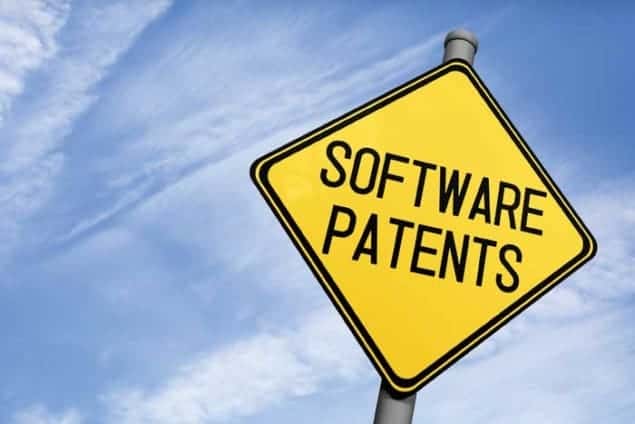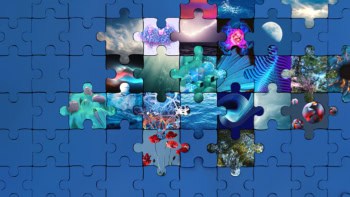Software creates an indeterminate legal zone blurring the line between patentable inventions and unpatentable ideas, as Robert P Crease explains

Laws, unlike nature, cannot recognize indeterminacy and will go to all lengths to squash an ambiguous phenomenon into a recognized state. The recent declaration by the US Patent Trial and Appeal Board that magnetic resonance imaging machines are “abstract ideas” is one example. Looming cases in which courts will have to decide if an embryo is a person or property is another. Intellectual Ventures v. Symantec – a case involving software decided by the US Court of Appeals for the Federal Circuit last September – is yet one more.
An anti-virus corporation based in California, Symantec had been sued by Intellectual Ventures – a company that buys and licenses intellectual property – for infringing patents relating to certain software features. (Intellectual Ventures was founded in 2000 by physicist and former Microsoft chief technology officer Nathan Myhrvold.) The court rejected the suit, partly following the 2014 US Supreme Court case Alice Corp. v. CLS Bank International.
That case implied that many software patents were unfounded because they involve “abstract ideas”. What shocked and baffled lawyers and geeks alike, however, about the Intellectual Ventures decision was one judge’s declaration that “software is a form of language” and that patenting software would therefore amount to a “suppression of free speech”.
Inventions versus ideas
A patent is a right to a limited monopoly that a nation grants an inventor in exchange for the public disclosure of an invention. The social policy of such a deal is to encourage openness and risk-taking by making it unnecessary for innovators to hide inventions to protect their ability to exploit them. But patenting has limits. As I discussed in a previous column (see “Patenting science” April 2014) as the Alice decision loomed, the US Supreme Court ruled in 1972 that patents on “products of nature”, natural laws and abstract ideas are impermissible because such patents would “inhibit future innovation premised on them”.
Digital technologies can blur the legal distinction between inventions and abstract ideas. The 2014 Alice decision failed to clear up this indeterminacy. While not precluding patenting software, it did convey scepticism about the patentability of many already-issued software patents. The Intellectual Ventures decision expressed still stronger scepticism.
To quote from concurring judge Haldane Mayer’s opinion: “Software lies in the antechamber of patentable invention. Because generically-implemented software is an ‘idea’ insufficiently linked to any defining physical structure other than a standard computer, it is a precursor to technology rather than technology itself.” The Internet, he continued, is “the most participatory form of mass speech yet developed” and therefore “deserves the highest protection from governmental intrusion”. As a form of language, software enjoys such protection.
Software states
Software does not fit any existing legal categories. Elsewhere in Judge Mayer’s opinion he compared it to literature or music, in which case it would be subject to copyright. Copyright is a legal category often used to cover legally disruptive new technologies. The first copyright law (the 1710 British Statute of Anne) covered books, but was eventually extended by analogy to maps, music and photographs. In 1976, after companies started to sell hardware and software separately, the US Copyright Act explicitly put software in the conceptual box of copyrightable things. But copyright, which protects copying of original material, is of limited value to protect software, which is often created by combining original elements with publicly available code. It is easy to avoid restrictions by coding an attractive new feature borrowed from another software’s innards a little differently.
This explains the desirability of trying to put new software developments in the patent state, which is designed to protect original ideas. But software doesn’t fit well here, either. It’s not a concrete object, like a mousetrap, but more like a set of instructions.
The difficulties of using either copyright or patent legislation to protect software invites turning to trademark legislation. This is an attractive analogy because while trademarks are identifiers of a product, they can apply to its overall shape – the look of a Toyota Prius, say – leaving aside specific details of innards. But determining the identity of a piece of software poses other difficulties, and trademarks protect the look of something rather than its functioning.
Faced with the immense intellectual property perplexities of software, Judge Mayer appealed to yet another analogy: language. Software indeed has many linguistic features, with a distinctive, crafted structure mixing original and conventional parts. The analogy let him invoke well-established freedom of expression legislation applying to things in the linguistic state. The social policy of free-speech legislation is to encourage sharing views about the world with other humans. But software – instructions that tell machines what to do – lacks properties that make expression valuable to communal life. The language analogy is as far-fetched as the others, but has the advantage of allowing courts to opt out of the issue’s subtleties.
The critical point
Software thus creates a good legal example of what I’d call “interstate discomfort”, or the deliberate forcing of something into a category where it obviously doesn’t belong but that makes it able to be handled as if it were a conventional state. While physicists regard indeterminate phases – liquid crystals, say – as interesting challenges to be explored, judges find them intolerable and demand binaries; an invention, for instance, must be in one state or another, patentable or not.
The problem will only worsen. When the courts eventually get a case on a patent claim for an invention made by a computer, I can’t wait to see what state they try to squash that into. Physics, you might say, has a degree of freedom that the law lacks.



